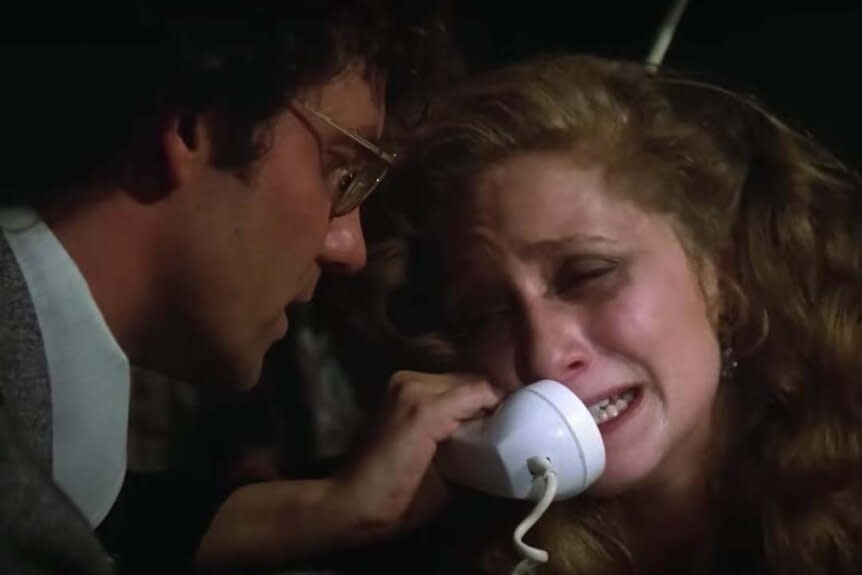Why When a Stranger Calls Is Still Such an Unnerving Watch
It's easy to imagine a half dozen other versions of a film like When a Stranger Calls, especially if you haven't seen the film but you know the bare basics of the premise. The film is a riff on the "babysitter and the man upstairs" urban legend, a tale of the calls coming from inside the house while a defenseless woman sits downstairs, terrified. You know that particular story, whether you're aware of it or not, and with that in mind you can imagine a film that spends its first hour slowly building up to that reveal, a film built entirely around that singular twist.
RELATED: The 13 Scariest Horror Movies Streaming on Peacock
But thankfully for all of us, When a Stranger Calls goes another way, and you can experience it right now on Peacock.
Why Now Is a Great Time to Revisit When a Stranger Calls, Now Streaming on Peacock
The urban legend is still there, of course, and it plays out pretty much exactly like the classic version of the story would suggest, with a babysitter (Carol Kane) who becomes an unwitting pawn in a killer's (Tony Beckley) deadly break-in game. But here's the twist: The movie opens with that scenario, delivers it with all the tension and drama you'd expect, then becomes something else entirely, a haunting journey of fear and unfinished business that goes way beyond the original legend.

Jill Johnson (Carol Kane) (R) appears in When A Stranger Calls (1979). Photo: When A Stranger Calls (1979) | Full Movie | Carol Kane | Charles Durning | Rutanya Alda/Films 4 You YouTube
See, after the initial shock of the babysitter and the man upstairs legend playing out onscreen, When a Stranger Calls takes a left turn and becomes the story of a detective (Charles Durning) haunted by the case, in which two kids ended up dead and the killer ended up in a mental institution. A few years later, that same killer escapes, giving the detective a second chance at finding a measure of justice, while the killer himself is still out there, looking for his next target, struggling to exist in a hostile world that he's ill-suited for despite his murderous tendencies.
RELATED: Don't pick up the call! 5 other terrifying telephone movies like 'The Black Phone'
The entire second act of When a Stranger Calls digs deep into this, as Durning and Beckley turn in dueling performances as men haunted by a single, brutal moment, each dancing around the other, both sort of flailing in a world that's unsuited to their particular minds. It's arguably a strange choice in terms of more conventional horror plot shifts, but it creates a sense of true unease in When a Stranger Calls that's rare in films of this kind. By placing us in the shoes of the killer as he tries to get back out into the world while being pursued by the authorities, the film adds a layer of discomfort and tension that a more conventional slasher narrative might have missed. We become complicit not just in the way this killer was handled by society, but in the way he makes his next move, plotting his return to the bloody work that got him in trouble in the first place.
But the film still isn't done. Director and co-writer Fred Walton spends a ton of time immersing us in this strange situation, digging into the psyches of both men, ratcheting up the tension as it becomes clear that our killer is on the hunt for a new target. Then, when you think it can't get any darker, the babysitter from the beginning of the film is reintroduced, setting up a finale that delivers a new twist on an urban legend, as well as one of the most viscerally frightening sequences in 1970s horror. It's a remarkably deft little dance that'll spike your heart rate, and probably have you checking to see if your own kids are safe a few times during the film
When a Stranger Calls is now streaming on Peacock.
